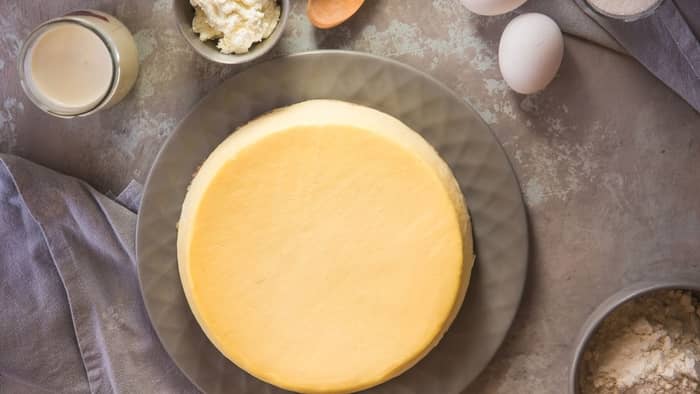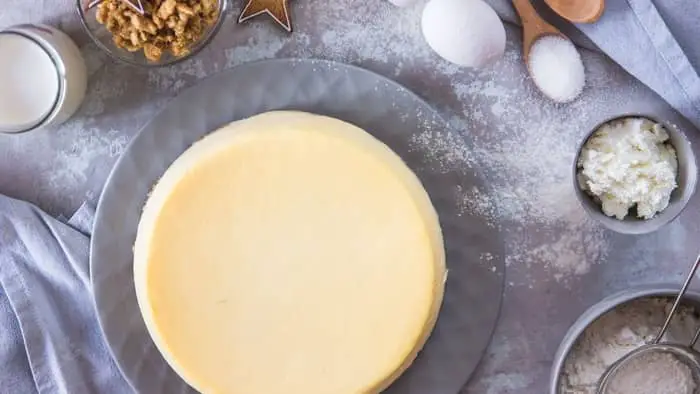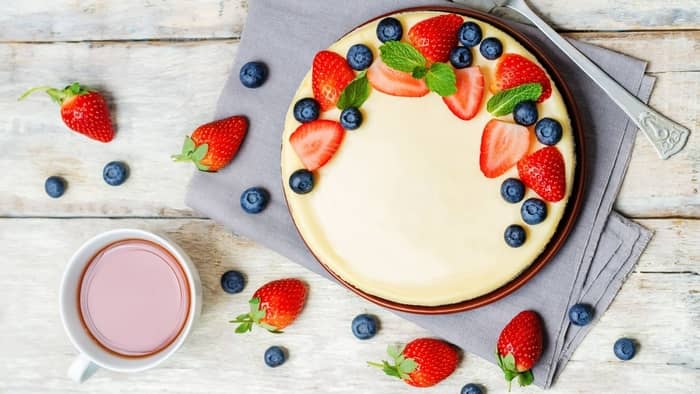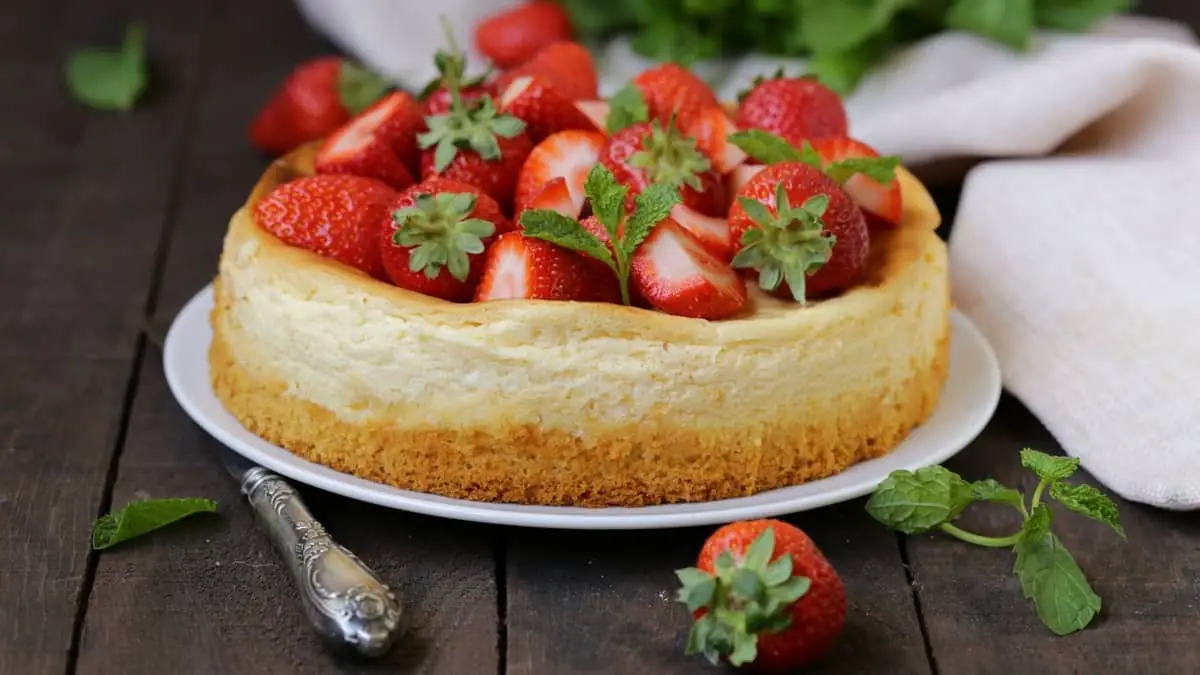Last Updated on January 6, 2022 by admins
After deciding to have a baked Cheesecake at your luncheon, I’m sure you reach for a particular recipe. I certainly do. It is generally a tried and tested recipe handed down by granny. She was a master of baking all things sweet. You should have tasted her fudge!
You weigh out the ingredients and prepare the cheesecake. The cake is then placed in a water bath, transferred into a ready oven, and left to bake.
You are waiting for the moment of perfection when it can be whipped out of the oven to be cooled. The big question is, when and what indicates that exact moment? How does one know the exact timing to achieve the perfect cheesecake?

When is Cheesecake Done?
There are a number of articles relating to the core temperature of the cheesecake. If you are a real foodie and have a thermometer, you could use this.
Place the steel point into the center of the cheesecake in order to see if the filling has reached the relevant temperature.
Most egg-based desserts need to bake and reach a minimum temperature of 160 degrees Fahrenheit. This will not only ensure to kill off any traces of the salmonella bacterial disease. But you will know for sure your cheesecake will set as the egg proteins are cooked.
This probing and reading of temperatures are quite scientific. And baking should be a feeling! Well, that’s how I feel! And besides that, you do not want to have pinpricks all over the surface of your cheesecake masterpiece.
Instead, I suggest you rather use the “Cheesecake Jiggle Test.”
Granny certainly didn’t have a cooking thermometer and produced many perfect cheesecakes using the ‘jiggle’ test.
It sounds way more fun anyway!
The Cheesecake Jiggle Test
The jiggle test is a well-known technique used for years. And it involves checking the cake before time by giving the springform tin a firm shake.
Closely observe the movement in the center of the cheesecake. If the edges are firm and the center not so liquid-like, then be sure to remove the cheesecake from the oven immediately. You should then quickly transfer the cake onto a cooling rack to try and bring the core temperature down and minimize any further cooking.
You do not want the cheesecake to overcook and curdle. that would be catastrophic, especially after all the effort you have been through.
Be sure to set your kitchen timer and keep checking your cheesecake before the cooking time is up.
A flow of liquid-like circles would mean the cheesecake needs to stay in the oven for a little while longer to complete the cooking process. Be sure not to get distracted at this time, and rather vigilance is the order of the day.
Your Cheesecake readiness can happen with alarming speed, and you can see your cake go from underdone to overdone in seconds. That would be disastrous, so be sure to keep an eye to ensure your most perfect of Cheesecakes.
You can make that cup of tea once the cake is out of the oven, so hang in there!
Is Cheesecake Supposed To Be Jiggly?
Is cheesecake supposed to be jiggly? Well, yes, sort of. What you are looking for is a slight jiggle in the center of the cake.
The word “jiggle” is defined as “move about quickly from side to side or up and down” in the Cambridge English Dictionary. But that seems to be a lot more movement than what we are looking for in the center of the cheesecake.

I would change the use of the conventional description. We are looking for a softer movement, more of a “wiggle.” Regardless of the semantics, you want to see a gentle movement when you shake the cake tin.
It is important to remember that the cheesecake will continue to “cook” once you take it out of the oven. So it is imperative to remove the cheesecake from the oven at the time of the wiggle or jiggle.
Place the cheesecake onto a cooling rack for an hour or two to cool completely before being covered or placed in an airtight container and placed in the fridge.
Colour Of The Cheesecake
The top of the cake should either be pale in color or show a faint caramelizing on the creamy top of the cheesecake.
With your constant checking on the cheesecake, always ensure that the oven door is kept open for an absolute minimum of time. It is imperative that the oven temperature does not drop and affect the cooking process due to the temperature change.
So, while you can check your cake by opening the door, peeping through the glass in the oven door would be best. And be sure not to check your cake by opening the door within the first few moments of placing it in the oven. This will drop the oven temperature and affect the cooking process and time.
Presenting Your Cheesecake Masterpiece
Presenting your cheesecake masterpiece can be rather stressful, as you will only know if it is baked to perfection on cutting the cake. It could be a great success or an epic failure.

An underdone cheesecake will not hold its shape when cut. The center of the cake will begin to collapse, and the filling will run. While, in comparison, an overdone cake will be dry and crumbly. Both results are not what you are looking for but rather a happy medium of the two.
You are looking for a firm set of cheesecakes with a smooth and creamy texture. Served on a piece of china handed down from granny, with poached fruit possibly or fresh- whatever tickles your fancy on the day.
In good time and with practice, you will be baking the perfect cheesecake; remember the jiggle or rather the wiggle test! And you can’t go wrong.
Happy jiggling or wiggling

